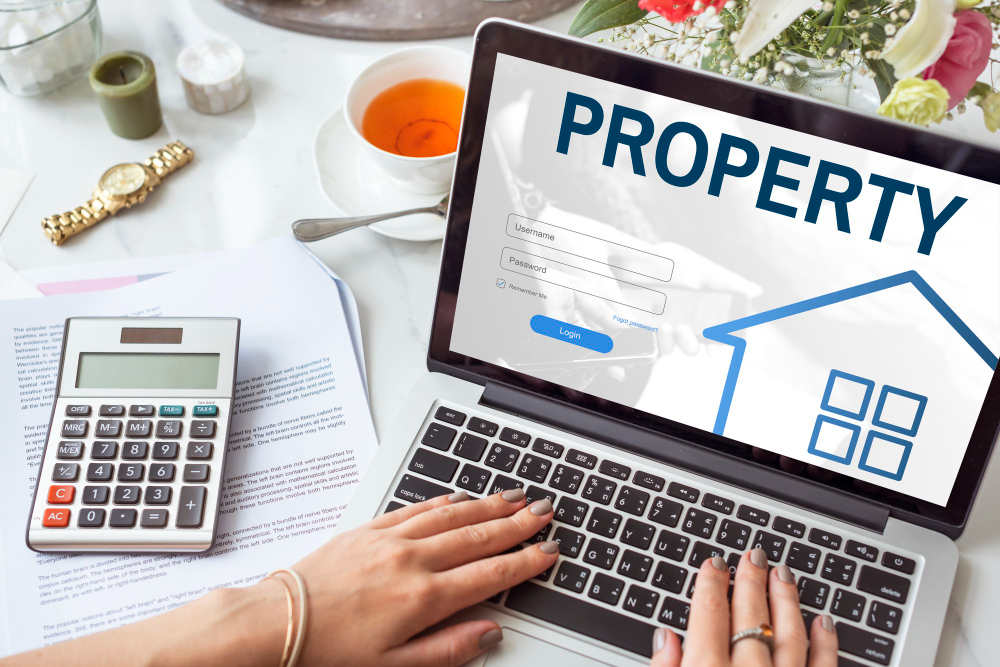When the IRS sends you a notice of levy, it’s not just another letter; it’s a legal warning that they plan to seize your wages, bank accounts, or other property to cover unpaid taxes. This step usually comes after several reminders and notices have already been sent. While receiving a levy notice can feel overwhelming, it doesn’t mean you’re out of options. The IRS has specific procedures to follow, and taxpayers still have rights to protect their assets or resolve the debt before collection begins.
Acting quickly can protect your assets and stop further collection actions. Knowing what to do when you get a notice of levy helps you stay in control.
Latest Facts & News
- IRS levy notices continue to rise in 2024: With more than 750,000 IRS levy notices issued through the end of the year so far, the agency is showing signs that it is upping its efforts in terms of enforcing tax compliance against individuals and small business owners.
- CP504 Notice of Intent to Levy is typical: The CP504 has now become the second most frequently issued IRS warning sent to any taxpayer and serves as the final prop before the IRS is able to levy the state tax refunds or other property in case they have not paid back taxes.
- Digital relief goes further: The IRS has published new online tools, and taxpayers can now create installment payment plans and make their hardship requests online, making relief much more efficient once a levy notice has been issued.
- Bank levies and wage garnishments: Unlike wage garnishments, bank levies can clear non-exempt accounts, whether personal or business, and have nebulous hardship exemptions based upon living expenses.
- Relief avenues: The IRS can physically release or revoke a levy due to economic hardship, mistake, or promptly dispute, but to be guarded about the latter, one should file as fast as possible.
Understanding what a levy really is and how to respond is the first step to keeping control of your finances.
What Is a Notice of Levy and Why Did You Receive It?
A notice of levy is an official IRS letter warning you that the agency intends to seize property or funds to compensate for unpaid tax debts. This notice is typically issued only after multiple prior notices and warnings that have failed to elicit payment.
When you receive this notice, the IRS is telling you that unless you take immediate action, it will begin taking your money, wages, or property. It’s a serious legal step showing that prior notices have been ignored or disputed unsuccessfully.
Key points to know:
- The notice identifies the taxes owed, tax periods, and the amount due.
- The IRS will target bank accounts, wages, state refunds, and other assets.
- This legal notice demands a prompt response or payment to avoid collection.
Understanding this notice is important because ignoring it can lead to immediate asset seizures, but acting quickly can protect your rights.
Common IRS Notices: CP504, Final Notice, Bank Levy
The IRS uses several types of notices that may escalate if ignored.
- CP504 Notice (Notice of Intent to Levy CP504)
This notice is sent when the IRS plans to collect unpaid taxes by levying your state tax refund. It’s typically the second-to-last warning before further collection actions. If you ignore the CP504, the IRS can proceed with a bank levy or wage garnishment. - Final Notice
Often called the “Notice of Intent to Levy and Notice of Your Right to a Hearing” (Letters LT11, 1058), this is the final pre-levy notice. It informs you that the IRS can levy nearly any assets, including wages and bank accounts. - Bank Levy
The IRS orders your bank to freeze and surrender funds from your accounts to pay your tax debt. This usually happens after final notices are ignored. - Wage Garnishment
The IRS instructs your employer to withhold a portion of your paycheck until your taxes are paid.
Each notice is a step closer to collection, so you must act proactively to save your money.
| Also Read : IRS Offer in Compromise: Impact on Tax Refunds |
What to Do When You Get a Notice of Levy?
If you want to know what to do when you get a notice of levy, here is a clear, practical guide to help you navigate the process:
Immediate Steps to Take After Receiving a Notice
- Read the Notice Carefully: Double-check the details like your name, tax years, amounts owed, and deadlines. Confirm the information matches your tax filings.
- Don’t ignore the Notice: Ignoring the IRS’s letter will only hasten collection, bank accounts can be frozen, wages garnished, and property seized.
- Contact the IRS or a Tax Professional: Contact the IRS about options to pay or hire a tax expert who will be able to communicate and negotiate on your behalf, like the staff at Halls IRS.
- Review for Errors: Make sure you actually owe the debt claimed. Locate tax returns, payments, or other documents that can support your case if there’s a mistake.
- Note the Deadline: Most levies have a 21–30 day window for appeal or response before the IRS acts.
- Prepare for Action: Gather financial documents, bank statements, pay stubs, and any correspondence that can help you verify or dispute the debt.
Taking proactive and informed steps at the earliest can really boost your chances of preventing a levy.
Your Rights After a Notice of Levy
You are not powerless after receiving a notice of levy. You have several important rights:
- Request an Appeal or Hearing: You can ask to have a hearing under the Collection Due Process (CDP) to contest a levy or tax debt within the time limits.
- Negotiate Payment Plans: Offer a payment plan to pay your debt in monthly installments, which will stop levy proceedings.
- Dispute Mistakes: All the errors that can be made by the IRS in calculations or misidentifying you should be corrected by filing the corrections with the supporting documentation.
- Request a Levy Release: There are many reasons why the IRS requires a levy to be halted when you fully pay your debt, the IRS collections statute has expired, or hardship has been confirmed.
Getting expert help can make understanding and asserting these rights much easier.
| Also Read : IRS Levy on Wages: How to Protect Your Income |
Notice of Intent to Levy CP504: What It Means & How to Respond
A Notice of Intent to Levy CP504 warns that the IRS plans to seize your state tax refund or other assets due to unpaid taxes. It follows earlier notices and requires prompt action. Review the notice, pay if you can, or contact the IRS to arrange payment or dispute errors. Acting quickly helps avoid tougher penalties.
Why You Got the CP504 Notice?
The notice of intent to levy CP504 sends a serious alert. Despite the IRS’s attempts to collect taxes through bills and reminders, you have not responded. Consequently, the CP504 notice is issued, initially targeting your state tax refunds for collection.
Ignoring a notice of levy can lead to the seizure of assets, including wages and bank accounts.
Triggers for CP504 notices include:
- Overdue income taxes
- Failure to file previous tax returns
- Employer payroll tax liabilities
How to Respond to CP504?
If you receive a CP504 notice of levy, here’s what to do:
- Pay the Balance in Full If Possible: This stops collection immediately.
- Set Up an Installment Agreement: If full payment isn’t possible, request a payment plan online or by phone.
- Look into Offer in Compromise: If you cannot pay the total, this allows settlement for less than owed if eligible.
- Appeal the Notice: File a formal dispute or request a hearing if you believe the debt is inaccurate.
- Apply for Hardship: Document financial hardship to request suspension or release of levy actions.
Delays in responding can significantly limit your options, so time is critical.
Can a Bank Levy Take All Your Money?
The IRS can levy your bank account multiple times until your tax debt is fully paid or the 10-year collection period ends. Each levy captures only the funds available at that moment so that new deposits can be targeted by future levies. To stop repeated levies, it’s important to pay off the debt, set up a payment plan, or resolve the issue with the IRS quickly.
How Bank Levies Work
Question: Can a bank levy take all your money? The short answer is that an IRS bank levy can freeze and seize all available funds in your bank accounts, excluding amounts protected by law.
When the IRS issues a bank levy:
- Your bank freezes your account quickly.
- After a 21-day notice period, the bank withdraws your frozen funds and transfers them to the IRS.
- This generally includes checking, savings, and other deposit accounts.
Exemptions from Bank Levies
Some funds are protected from levies:
- Social Security benefits
- Disability payments
- State-specific exempt minimum balances
- Child support or welfare funds in certain states
While private creditors usually need a court order to levy accounts, the IRS does not. This is why prompt action after a notice of levy is critical.
What To Do If Your Bank Account Is Levied
- Contact the IRS immediately and confirm the levy details.
- Inform your bank and provide proof of exempt funds.
- File for a hardship release if the levy prevents you from meeting essential expenses.
- Consult a tax professional to quickly address the situation and possibly reverse unfair levies.
| Also Read : Notice of Levy from IRS: What It Means and How to Respond |
How to Prevent or Stop a Levy?
To prevent or stop a levy, contact the IRS right away to set up a payment plan, claim financial hardship, or apply for an Offer in Compromise. Acting quickly after receiving a notice can help you avoid asset seizure and may qualify you for relief or a levy release if you show genuine financial difficulty. Resolving the issue early gives you more options to protect your finances.
Payment Plans, Hardship Claims, and Offers in Compromise
- Establish an Installment Agreement: Companies can make smaller and manageable payments and stop levies.
- Claim Hardship Exemptions: Explain the impact that a levy is having on your capacity to afford basic needs.
- Enroll in an Offer in Compromise: Pay less to settle your tax debt if you qualify.
- Look For Help With a Tax Expert: A Tax expert will take care of documents and negotiations.
Contesting a Levy or Incorrect Notice
If you believe the levy is wrong:
- Gather all relevant documents, like returns and proof of payments.
- File an appeal within the notice deadline using IRS forms (e.g., Form 12153).
- Contact the IRS regularly about your appeal status.
- Use tax experts to improve chances of success.
Latest IRS News & Updates on Levies
- The IRS now accepts digital hardship requests, speeding up levy release eligibility.
- Wage garnishments are increasingly used, especially for large debts.
- The IRS offers new self-help resources for levy and CP504 notices on its website.
Stay informed to make the most of available tools.
Protecting Your Assets Beyond the IRS
Protecting your assets from the IRS requires proactive measures against all financial threats, including taxes. These assist your monetary matters to stay safe and within control:
Quick Tips to Protect Your Assets:
- Having payment reminders and tax notifications can ensure that one does not miss deadlines.
- Consult an expert by involving a certified tax practitioner or a CPA.
- Establish and save money in an emergency fund to be even more financially secure.
- Keep a constant check on bank and investment accounts to ensure they are correct and not being used suspiciously.
- Maintain well-documented records concerning any tax payments, tax filings, and any correspondence related to taxes.
Staying organized and prepared goes a long way in keeping your hard-earned assets safe.
Proactive Steps to Avoid Future Levies
- Set tax payment reminders through banks or tax software.
- Work with a CPA or expert for an annual tax review.
- Create a savings buffer for unexpected IRS bills.
- File taxes and payments on time.
Early communication with the IRS can prevent levies from ever occurring.
Conclusion
A notice of levy from the IRS demands immediate attention. Read it thoroughly and act quickly. Contact the IRS or a tax professional to understand your options, including rights to appeal and hardship claims. Explore payment plans or offers to manage your debt. Staying informed about IRS changes and using online resources can help you protect your assets and reduce financial strain.
| Contact Hall’s IRS today to take control of your IRS levy and start securing
your financial future. |
FAQs
Q1.What is the timeframe I have, after I have been issued a notice of levy, before the IRS will take action?
- Once you get the last notice, the IRS will allow you a 21-day to 30-day period before they proceed with asset seizure. This is actually only a window, where you are allowed a short time to pay or negotiate a payment plan or even request an appeal, so it is important that you act fast.
Q2.Which, besides a bank account,is a property that can be levied by the IRS?
- IRS may levy diverse amounts of property to cover the taxes. In addition to your bank account, they can garnish your wages, Social Security check, federal and state tax refunds, vehicles, business assets, and in some extraordinary circumstances, your house. Everything just depends on the size of the debt and the amount you owe.
Q3.Am I allowed to have one of the levies released in case I can prove I am in financial difficulty?
- Yes, you can request the IRS to lift the levy because you can demonstrate that it is causing you an unfair financial burden presently, such as paying basic living fees. Nevertheless, even though the levy may be removed, you will continue to owe the tax debt that underlies the levy, and you will have to find a payment arrangement.
Q4.Will a notice of levy and my credit report influence each other?
- Even the notice of levy itself is not reported directly to credit bureaus. Nonetheless, once the IRS has filed a federal tax lien against you, the lien is now public record, and it may appear on your credit report and subsequently drop your credit score.
Q5.What is the variance between a Notice of Intent to Levy CP504 and a Final Notice?
- The purpose of a CP504 notice is to provide an early warning to primarily focus on your state tax refund and inform you that the IRS is starting to mean business in collecting what is due. The Final Notice, however, sounds a warning that your whole assets may be at stake and formally gives you the right to appeal against the levy to avoid it.




